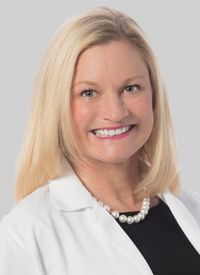For Breast Cancer Risk, Density Matters
Dense breast tissue can make tumors more difficult to spot in mammograms. And extremely dense tissue may be an independent risk factor for developing breast cancer.
Holly Pederson, MD

Holly Pederson, MD
The topic of breast density and cancer risk continues to garner attention. Currently 27 states have enacted breast density notification laws requiring that patients be given some level of information about their breast density after their mammogram.1 In one recent study, 47% of women aged 40-74 years had what is called “mammographically dense” breast tissue.2
This subject may come up during clinic visits, and here, Holly Pederson, MD, Director of Medical Breast Services at the Cleveland Clinic, provides information nurses and other clinicians can use to help educate their patients.
How Do Patients Determine Their Density?
Dense breast tissue can make tumors more difficult to spot in mammograms. And extremely dense tissue may be an independent risk factor for developing breast cancer.
This may come as a surprise to some patients, but breast density can’t be determined based on how their breasts feel. They may feel firm or lumpy to them but still not show up as dense tissue on a mammogram. Or they may feel soft, but still show up as dense in images.
When patients have a mammogram, it includes a scale for breast density. Women who fit two different categories—heterogeneously dense or extremely dense—fit the general definition of having dense breast tissue.
Density changes with age and weight. We expect a fit woman in her mid-30s to have dense breasts, for example. But density decreases in later decades, and being overweight or obese is associated with less dense tissue.
Beyond the Mammogram
Researchers found breast cancer risk highest for women who had dense breasts and other risk factors for cancer.2 The study included risk factors such as first-degree relatives with a history of breast cancer, a personal history of breast biopsy, and race or ethnicity.
This is a good start, because we haven’t had good models for understanding how density fits into risk assessment. But there’s more work to be done. Future studies should focus on more risk factors and exactly which women will benefit most from supplemental imaging.
Patients may also have heard of the “3-D mammogram.” This technique, called CT tomosynthesis, enhances the sensitivity of testing and can spot cancer in dense breasts more accurately than traditional mammograms. Its use also decreases the call-back rate for women who have screening mammograms, a common source of anxiety.
There’s also whole-breast ultrasound, which may increase detection by as many as 4.2 cases per 1000 women with dense breasts. And MRI screening is the most sensitive technique of all, with about 95% to 98% sensitivity, compared with about 81% to 87% for mammograms. With all of these techniques, there’s a question of whether they’re universally available—and covered by insurance. And MRIs are used only in high-risk cases.
In the coming years, expect more research on these techniques and more guidance on when and how providers should use them. For women with dense breasts, they can be valuable tools for detecting cancer early, when treatment is most effective.
What Patients Can Do
Cleveland Clinic’s approach to mammograms recommends yearly screening for most women starting at age 40. When patients do have a mammogram, they should be sure to ask for their density and remember it. Along with factors such as family history and genetics, it’s an important fact to know and understand.
If, for example, a woman with a family risk of breast cancer has dense breasts, her doctor may recommend more specialized screening. But even for those who don’t have genetic risk factors but do have dense breasts, a discussion of risk and risk modification with their clinician is always worthwhile.
Guidelines do vary—and there’s a lot of debate about them. The more patients know about any and all individual risks, the better they can be informed participants in conversations with their healthcare providers.
References
- DenseBreast-info.org. Legislation and Regulation: What Is Required? http://densebreast-info.org/legislation.aspx. Accessed September 30, 2016.
- Kerlikowske K, Weiwei Z, Tosteson A, et al. Identifying women with dense breasts at high risk of interval cancers. Ann Intern Med. 2015;162(10):673-681.
Nurse Practitioners Weigh in on Data From the San Antonio Breast Cancer Symposium
January 16th 2023Loyda Braithwaite, MSN, RN, AGPCNP-BC, AOCNP; and Jamie Carroll, APRN, CNP, MSN, highlight presentations from the 2022 San Antonio Breast Cancer Symposium that will influence oncology nursing practice.


